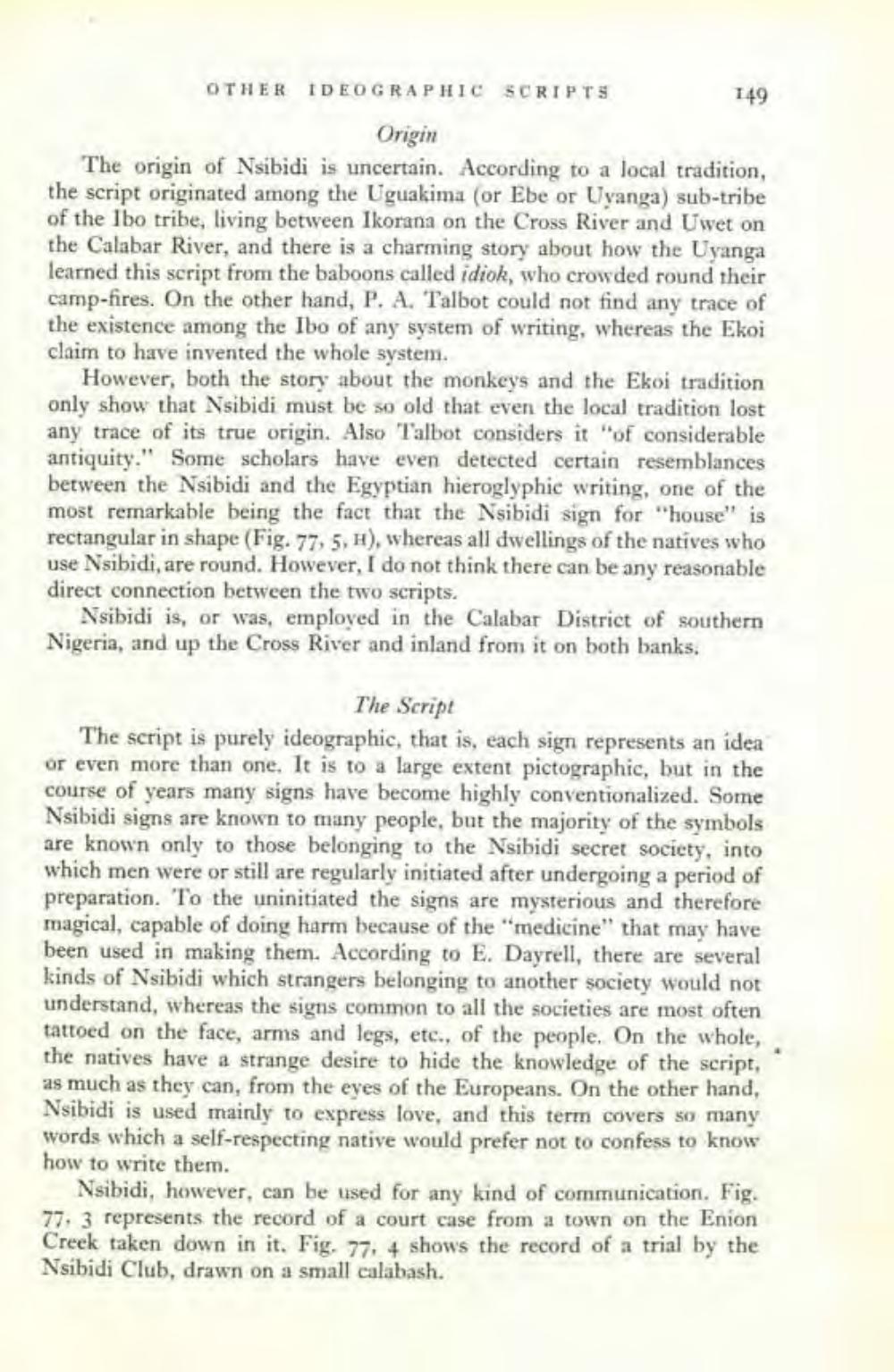________________
OTHER IDEOGRAPHIC SCRIPTS
Origin
The origin of Nsibidi is uncertain. According to a local tradition, the script originated among the Uguakima (or Ebe or Uyanga) sub-tribe of the Ibo tribe, living between Ikorana on the Cross River and Uwet on the Calabar River, and there is a charming story about how the Uyanga learned this script from the baboons called idiok, who crowded round their camp-fires. On the other hand, P. A. Talbot could not find any trace of the existence among the Ibo of any system of writing, whereas the Ekoi claim to have invented the whole system.
149
However, both the story about the monkeys and the Ekoi tradition only show that Nsibidi must be so old that even the local tradition lost any trace of its true origin. Also Talbot considers it "of considerable antiquity." Some scholars have even detected certain resemblances between the Nsibidi and the Egyptian hieroglyphic writing, one of the most remarkable being the fact that the Nsibidi sign for "house" is rectangular in shape (Fig. 77, 5, H), whereas all dwellings of the natives who use Nsibidi, are round. However, I do not think there can be any reasonable direct connection between the two scripts.
Nsibidi is, or was, employed in the Calabar District of southern Nigeria, and up the Cross River and inland from it on both banks.
The Script
The script is purely ideographic, that is, each sign represents an idea or even more than one. It is to a large extent pictographic, but in the course of years many signs have become highly conventionalized. Some Nsibidi signs are known to many people, but the majority of the symbols are known only to those belonging to the Nsibidi secret society, into which men were or still are regularly initiated after undergoing a period of preparation. To the uninitiated the signs are mysterious and therefore magical, capable of doing harm because of the "medicine" that may have been used in making them. According to E. Dayrell, there are several kinds of Nsibidi which strangers belonging to another society would not understand, whereas the signs common to all the societies are most often tattoed on the face, arms and legs, etc., of the people. On the whole, the natives have a strange desire to hide the knowledge of the script, as much as they can, from the eyes of the Europeans. On the other hand, Nsibidi is used mainly to express love, and this term covers so many words which a self-respecting native would prefer not to confess to know how to write them.
Nsibidi, however, can be used for any kind of communication. Fig. 77. 3 represents the record of a court case from a town on the Enion Creek taken down in it. Fig. 77, 4 shows the record of a trial by the Nsibidi Club, drawn on a small calabash.




